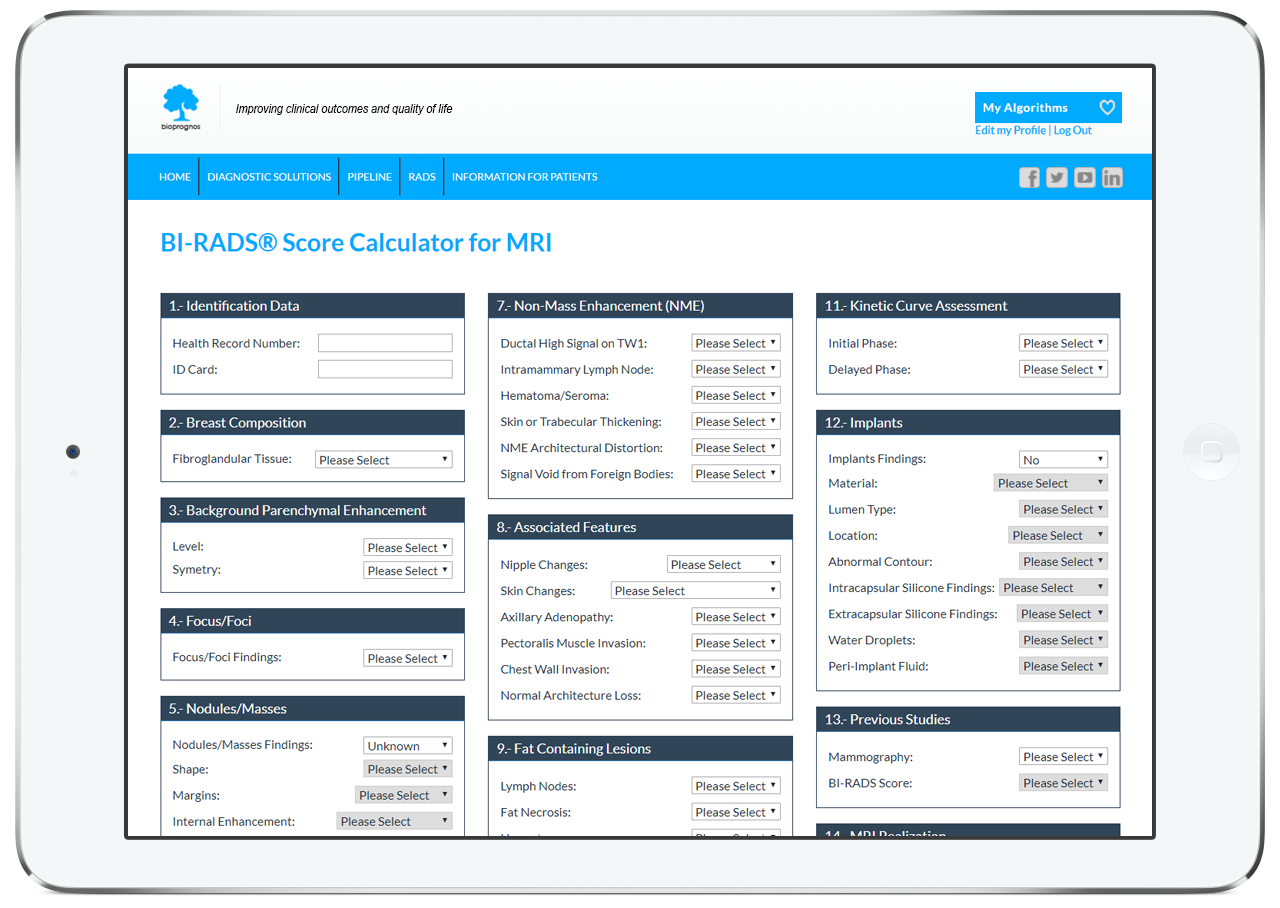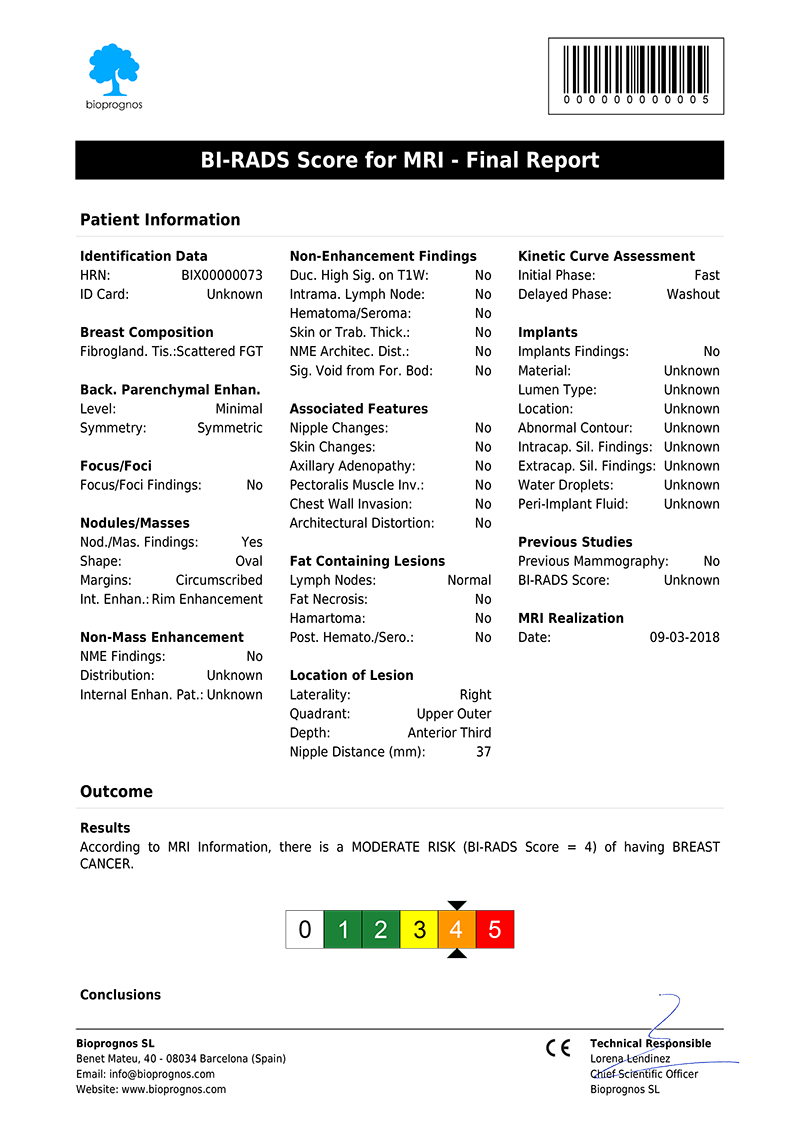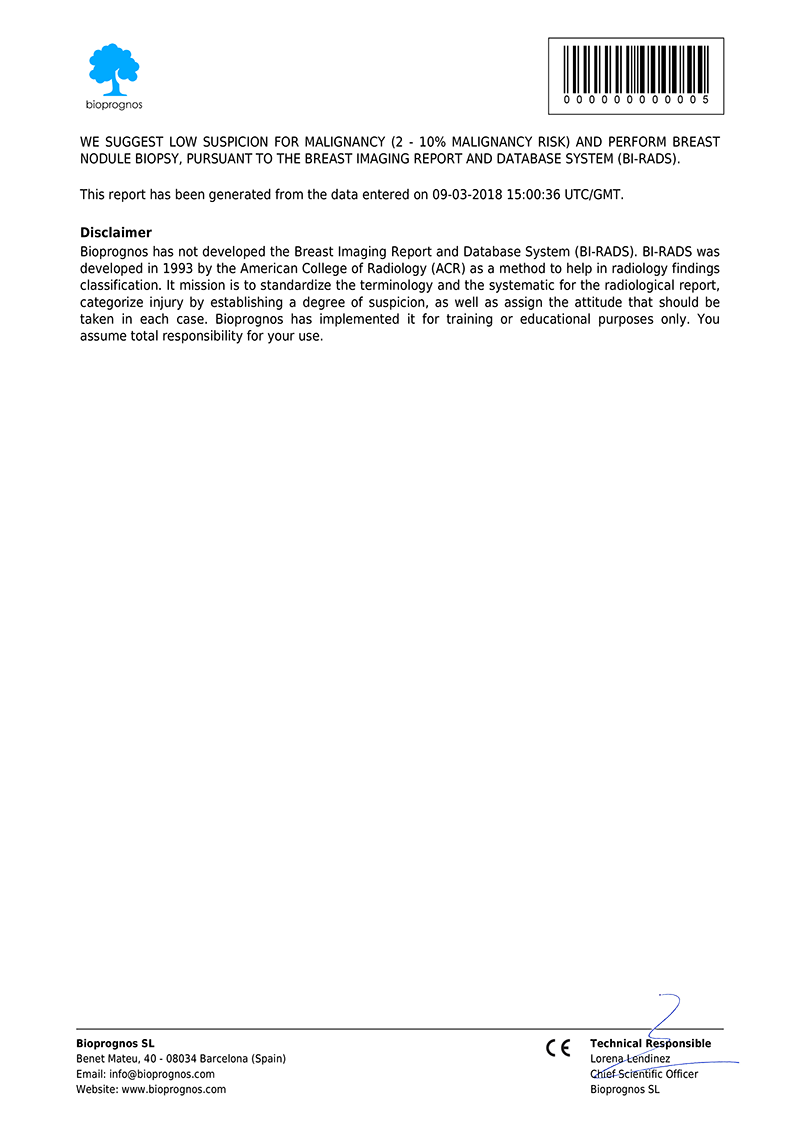BI-RADS® for MRI
Overview
The Breast Imaging Reporting and Data System (BI-RADS®) was developed by the American College of Radiology (ACR) to serve as a guide providing standarized breast imaging terminology, a recommended reporting structure including final assessment categories with accompanying management recommendations, and a framework for data collection and auditing. Subsequent validation showed that implementation of BI-RADS® reduces inter and intraobserver variability. The first edition was released in 1993 for Mammography findings, since then more editions have been released. In 2003 the first edition of the Ultrasound (US) and Magnetic Resonance Imaging (MRI) BI-RADS® Atlas was published.
BI-RADS® for MRI was designed to standardize breast imaging reporting and to reduce confusion in breast imaging interpretations. It also facilitates outcome monitoring and quality assessment.
Online Tool
BIOPROGNOS has implemented ―for training or educational purposes―, the last versions of BI-RADS® for Magnetic Resonance Image (MRI) for Brest Cancer screening and detection. BI-RADS® for Magnetic Resonance Image (MRI) is based on the lexicon for standardized terminology (descriptors) for Magnetic Resonance Image (MRI), as well as the chapters on Report Organization and Guidance Chapters for use in daily practice. Use is free of charge and not limited.

Final Report
Once entered the patient data, our BI-RADS® Score Calculator for Magnetic Resonance Image (MRI), presents the results as a PDF document, that can be downloaded or sent by email.


Click here to open it in PDF format.
The report includes all Patient Data as well as Score, calculated according last version of BI-RADS® for Magnetic Resonance Image (MRI).
The Science Behind BI-RADS® for MRI
Based on Publications
- ACR BI-RADS Altas Fifth Edition, Quick Reference. American College of Radiology. PDF.
- ACR BI-RADS Atlas – Reporting System Breast MRI. American College of Radiology. PDF.
Related Publications
- Gity, M., Moghadam, K. G., et al. (2014). Association of Different MRI BIRADS Descriptors with Malignancy in Non Mass-Like Breast Lesions. Iranian Red Crescent Medical Journal. 16(12): e26040. DOI: 10.5812/ircmj.26040
- Hernández, P. L., Taub, T., et al. (2016). Breast calcifications: Description and classification according to BI-RADS 5th edition. Revista Chilena de Radiología. Vol 22, Issue 2. DOI: 10.1016/j.rchira.2016.06.004
- Leithner, D., Wengert, G., et al. (2017). MRI in the Assessment of BI-RADS1 4 lesions. Topics in Magnetic Resonance Imaging. Vol26, Number 5. DOI: 10.1097/RMR.0000000000000138
- Mary, C., Gatsonis, C., et al. (2012). Positive predictive value of BI-RADS MR Imaging. Radiology. Vol 264, Number 1. DOI: 10.1148/radiol.12110619.
- Sedgwick, E. L., Ebuoma, L., (2015). BI-RADS update for breast cancer caregivers. Breast Cancer Research and Treatment, 150, 243-254. DOI: 10.1007/s10549-015-3332-4
- Spick, C., Szolar, D. H., et al. (2015). Benign (BI-RADS 2) lesions in breast MRI. Clinical Radiology 70(4):395-9. DOI: 10.1016/j.crad.2014.12.004
- Spick, C., Szolar, D. H., et al. (2014). Rate of Malignancy in MRI-Detected Probably Benign (BI-RADS 3) Lesions. American Journal of Roentgenology. Vol 202, Issue 3. DOI: 10.2214/AJR.13.10928
- Strigel, R. M., Burnside, E. S., et al. (2017). Utility of BI-RADS Assessment Category 4 Subdivisions for Screening Breast MRI. American Journal of Roentgenology. Vol 208, Issue 6. DOI: 10.2214/AJR.16.16730

